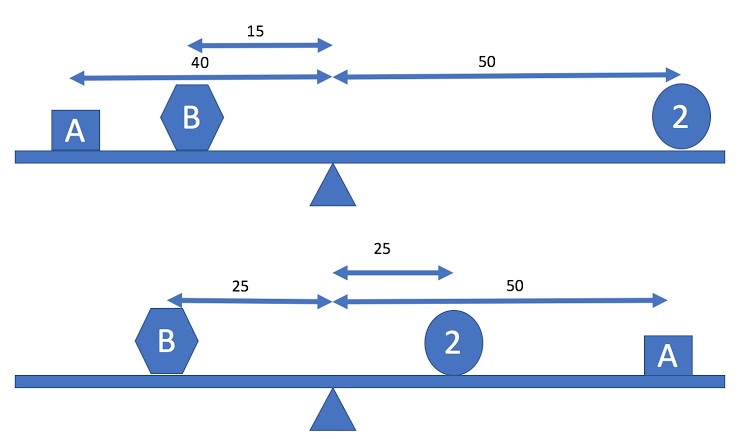8.2: Resolver Sistemas de Ecuaciones Lineales
- Page ID
- 115116
Recuerde el siguiente conjunto de ecuaciones del ejemplo de peso de masa:

\[ 40A + 15B = 100 \nonumber \]
\[ 25B = 50 + 50A \nonumber \]
Como saben, el sistema de ecuaciones anterior se puede escribir como una Matriz Aumentada en la siguiente forma:
\ [\ begin {split}
\ left [
\ begin {matrix}
40 & 15\\
-50 & 25
\ end {matrix}
\,\ middle\ vert\,
\ begin {matrix}
100\\ 50
\ end {matrix}
\ right]
\ end {split}\ nonumber\]
Dividir la matriz aumentada\( \left[\begin{matrix} A \end{matrix} \, \middle\vert \, \begin{matrix} b \end{matrix} \right] \) en su\(\left( 2 \times 2 \right) \) matriz de tamaño izquierda\(A\) y la\(\left( 2 \times 1 \right) \) matriz derecha\(b\). Definir las matrices\(A\) y\(b\) como matrices numpy:
Resuelve el sistema de ecuaciones anterior usando la función np.linalg.solve y almacena el valor en un vector llamado x:


